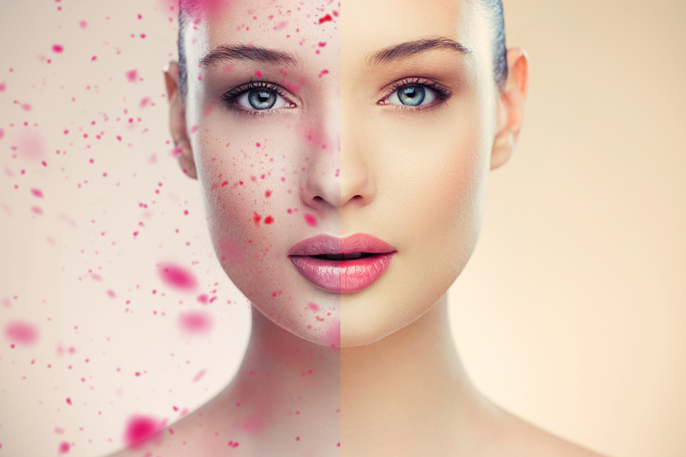
When we think skin lesions and acne, we associate them with adolescence when hormonal imbalance is common. Yet, skin lesions, the problem that plagues so many teenagers, may also afflict much older people. Acne rosacea, commonly referred to as rosacea in English, is an inflammatory condition of the skin of the face, that typically starts between 20 and 30 years old. When we think that skin lesions and clogged pores are no longer on our cosmetic agenda, we may be surprised to find ourselves battling a whole new problem.
What is acne rosacea?
This type of acne is characteristic for people well beyond their adolescence. Typically, the first alarming signs surface sometime in your 20s. The central portion of the face is affected, as it becomes persistently red, with papules, pustules and very distended capillaries, oftentimes accompanied by an unpleasant, itching or burning sensation. Sometimes, sebaceous glands become enlarged, in extreme cases even swelling the face. You need to be aware that rosacea, if ignored and left untreated, will unfortunately hit you in its full blast sometime in your 40s or 50s, around your menopause (though men are sometimes affected too).
The many faces of rosacea
Rosacea may in fact manifest in 4 forms. The first is telangiectasia, or vascular rosacea, manifested by recurrent flushing (transient erythema) and distended capillaries. In the papulopustular type, the skin is notoriously flushed (chronic erythema), and papules and pustules form. The nodular or phymatous type is characterized by chronic redness (erythema), papules, edema (swelling), and uneven skin appearance (nodules – phymatous changes). When these are accompanied by itching, burning or stinging, hypersensitivity to light and conjunctivitis (sore eyes), you are dealing with the ocular manifestation.
It is a tough call, true, but no need to feel defeated
While battling rosacea, specialist daily care cosmetics are an absolute must. They should primarily have anti-inflammatory, antibacterial, and sebum-normalising qualities. There are numerous underlying causes of rosacea, so in fact many people are vulnerable to the condition. Such factors as UV radiation, sebum content disorders, hormonal problems, bacterial skin infestation, as well as too much stress and digestive disorders may all be triggers.
Azelaic acid is known to be very effective in tackling both the signs and some of the causes of rosacea. It is the main active substance behind Arkana’s azelaic acid therapy. It has antibacterial properties and counteracts free radicals. Its huge asset is its ability to prevent sebum and lipid breakdown into irritating compounds. Look for cosmetics in our Azac Therapy MD line, designed for acne-prone skin, to take full advantage of its healing potential. You can choose from Azac Peel, Pre Peel Lotion, Azac Solution and Azac Forte Cream.
There are also a couple simple, yet solid rules for those of you who are affected with rosacea-prone skin. By all means avoid excessive sun exposure and hot spices in your diet. Plant extracts, such as olive leaf , green grass, algae, and green tea extracts are good remedies for already irritated, sore skin.

